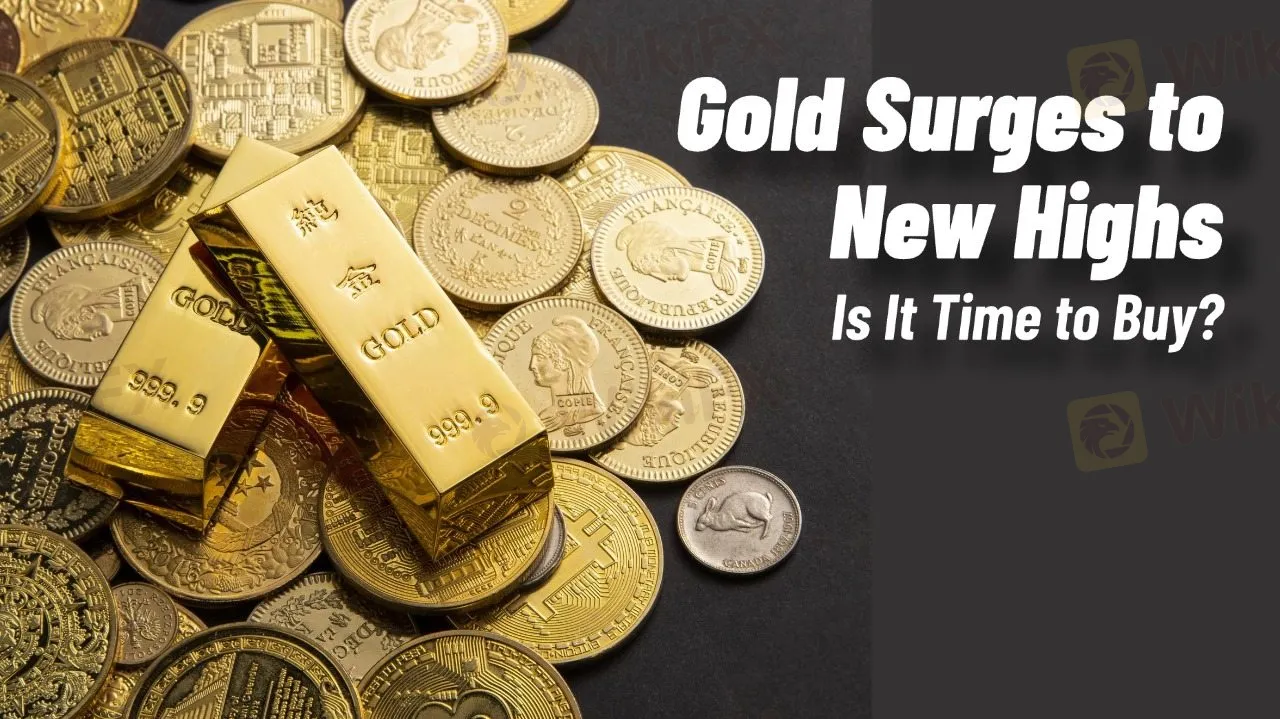Gold Surges to New Highs – Is It Time to Buy?
Abstract:Recently, gold prices have once again set new records, surpassing $3,077 per ounce and continuing a four-week winning streak. Is It the Right Time to Invest?

Market surveys indicate that surging demand for safe-haven assets has driven gold prices higher. Despite stronger-than-expected U.S. fourth-quarter economic data and a slight decline in inflation indicators, global trade uncertainties remain the dominant factor shaping market sentiment. Meanwhile, central banks continue to accumulate gold, providing long-term support for prices.
Why Is Gold So Volatile?
Gold price fluctuations are influenced by multiple factors. First, escalating global trade tensions have raised concerns about economic stability, prompting investors to seek refuge in gold. Recently, the U.S. announced a 25% tariff on auto imports and plans to introduce a “reciprocal tariff” policy on April 2. With market participants awaiting further details, investor sentiment has been highly reactive. Second, while expectations for Federal Reserve interest rate cuts have diminished, strong central bank demand and increasing ETF inflows continue to support gold prices.
Additionally, the broader precious metals market has gained momentum. Silver prices are nearing their highest levels since 2012, driven by tightening supply as London silver inventories flow into the U.S. Rising lease rates suggest further upward pressure on spot prices. Platinum and palladium have also seen modest gains, reflecting overall demand for safe-haven assets in times of economic uncertainty.
Despite gold's upward momentum, challenges remain. Technical analysis suggests that gold has broken through key resistance levels and entered an upward channel, but the $3,100 mark may pose short-term pressure, requiring further market validation.
For investors, short-term traders may capitalize on price fluctuations, while long-term investors should closely monitor global macroeconomic trends, particularly central bank policies and geopolitical risks. If the Federal Reserve adopts a more accommodative stance, gold could receive additional support. At the same time, evolving trade policies may influence market sentiment, making it essential for investors to stay informed and adjust their strategies accordingly to navigate potential risks and opportunities.

Read more

TradingPRO: A Closer Look at Its Licences
In an industry where safety and transparency are essential, the regulatory status of online brokers has never been more important. For traders seeking to protect their capital, ensuring that a platform operates under recognised and stringent oversight can make all the difference. Keep reading to learn more about TradingPRO and its licenses.

Oil Price Breakout Incoming? Investors Should Stay Alert
Oil prices are hovering around a critical level, with potential yet to be fully unleashed. Investors must prepare for sudden changes.

New SEBI Regulations on Intraday Trading
The Securities and Exchange Board of India (SEBI) has implemented revised regulations on Intraday trading, with effect from November 20, 2024. These regulations are meant to lessen risks and prevent speculative trading practices.

Top Forex Trading Strategies Every Trader Must Implement
Successfully navigating the fluctuating forex market landscape requires more than having a high-risk appetite. It requires effective strategies that assure you gains even during the market fall. Let’s go through the strategies many traders implement to gain.
WikiFX Broker
Latest News
eToro Review 2025: Top Trading Opportunities or Hidden Risks?
How much money will you earn by investing in Vantage Broker?
IronFX vs Exness Review 2025: Comprehensive Broker Comparison
Fraudsters Are Targeting Interactive Brokers' Users with Lookalike Emails
Interactive Brokers: Global Office Visits and Licensing Details
Top Tips to Choose the Best Forex Broker in 2025
SEBI Notifies New F&O Rules for Investors - New Derivative Trading Limits & More Amendments
ASIC Urges Financial Licensees to Fix Register Errors Before 2026 Deadline
U.S. Jobs Data Released: A Potential Boost for Gold Prices
SkyLine Guide 2025 Malaysia: 100 Esteemed Judges Successfully Assembled
Rate Calc
